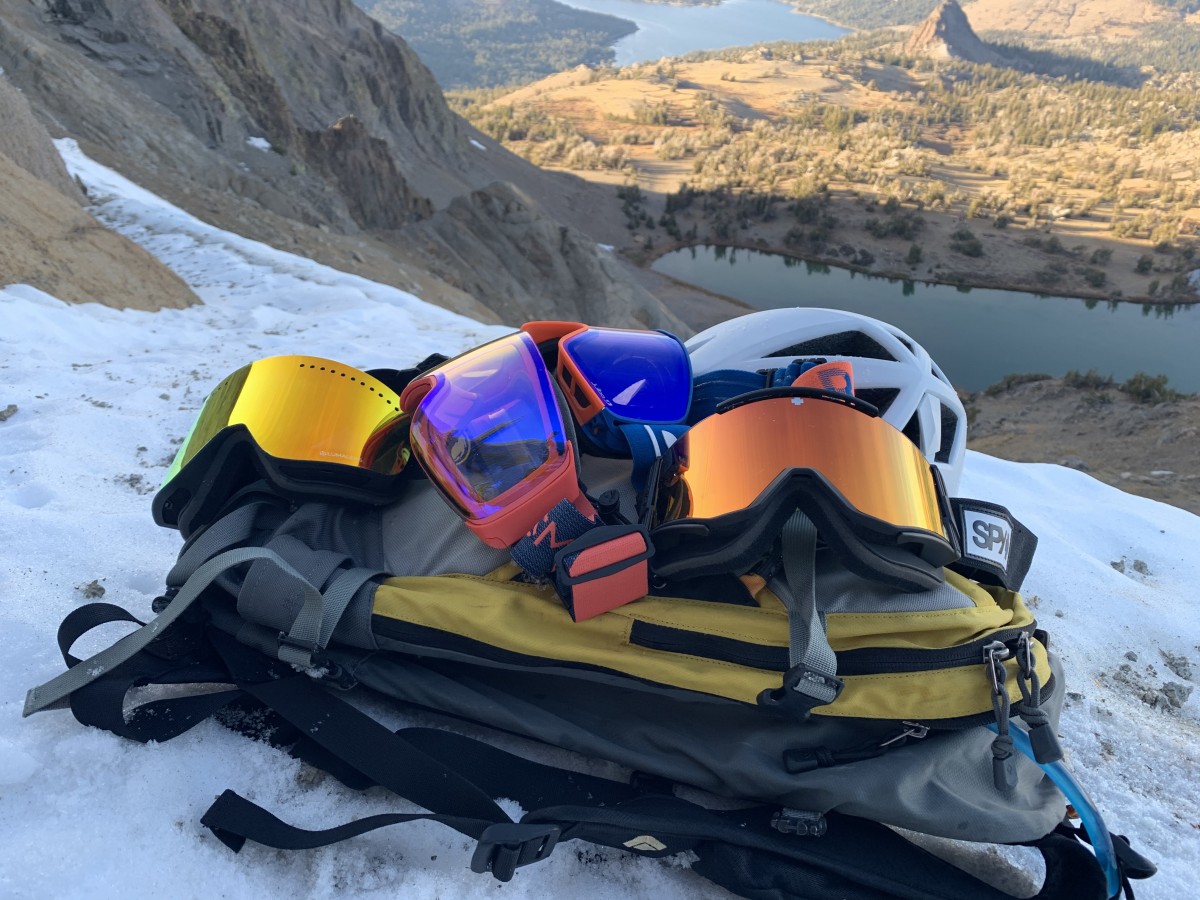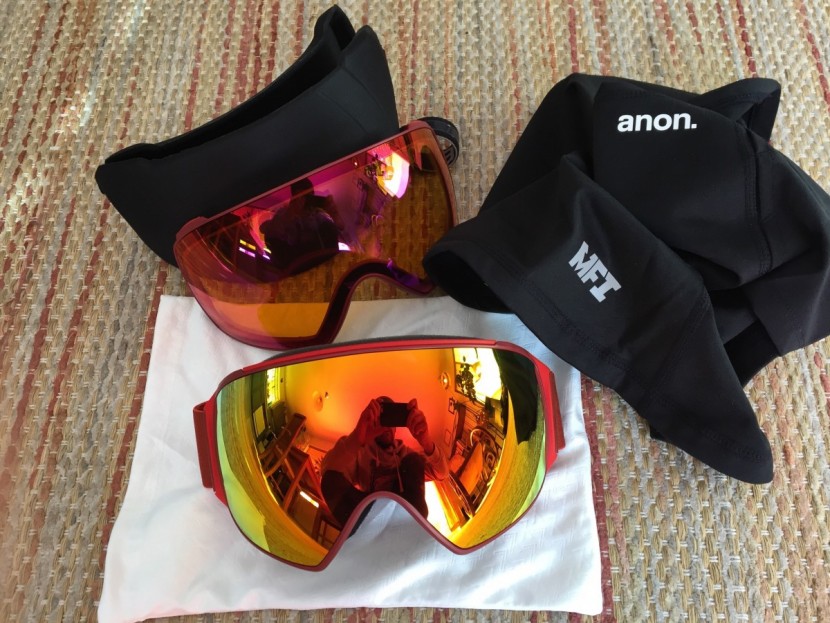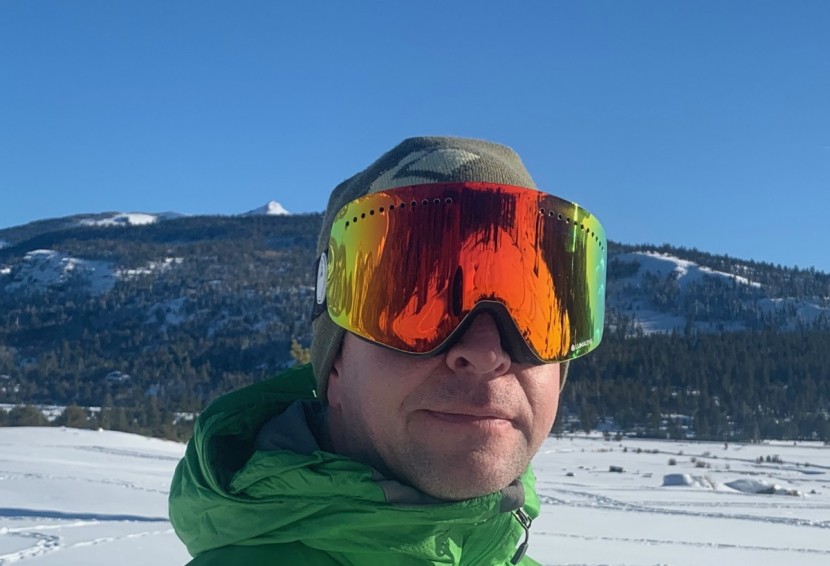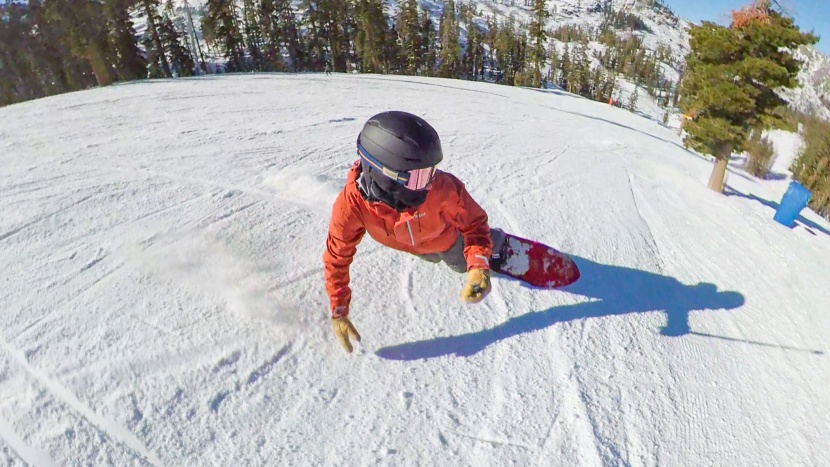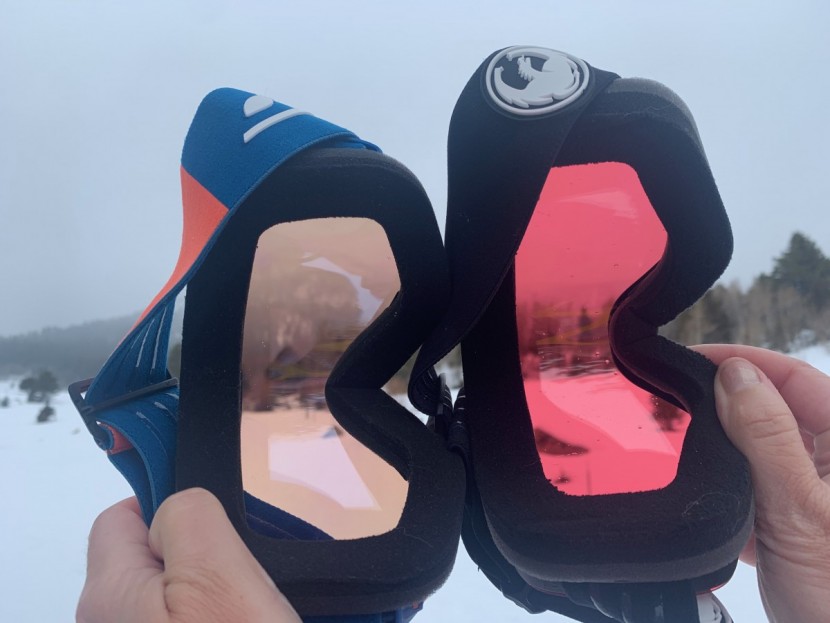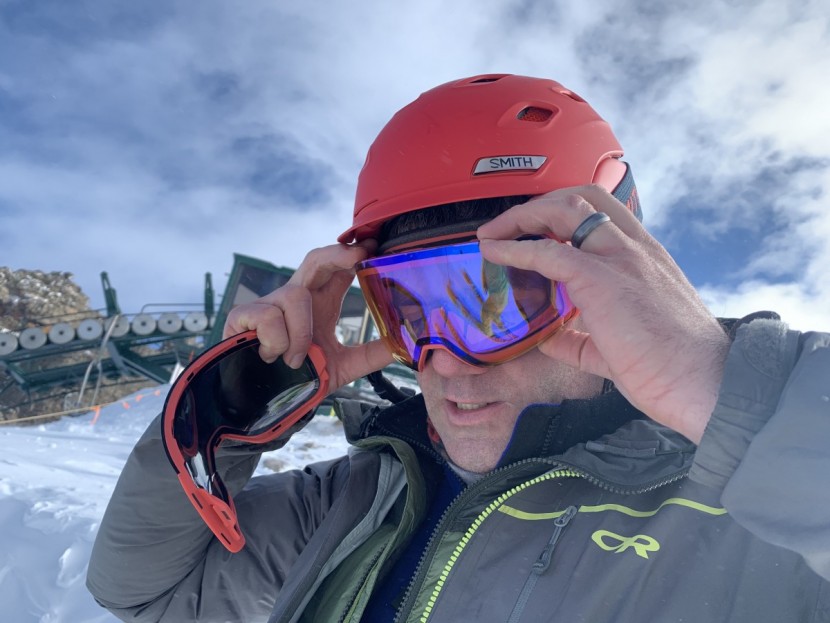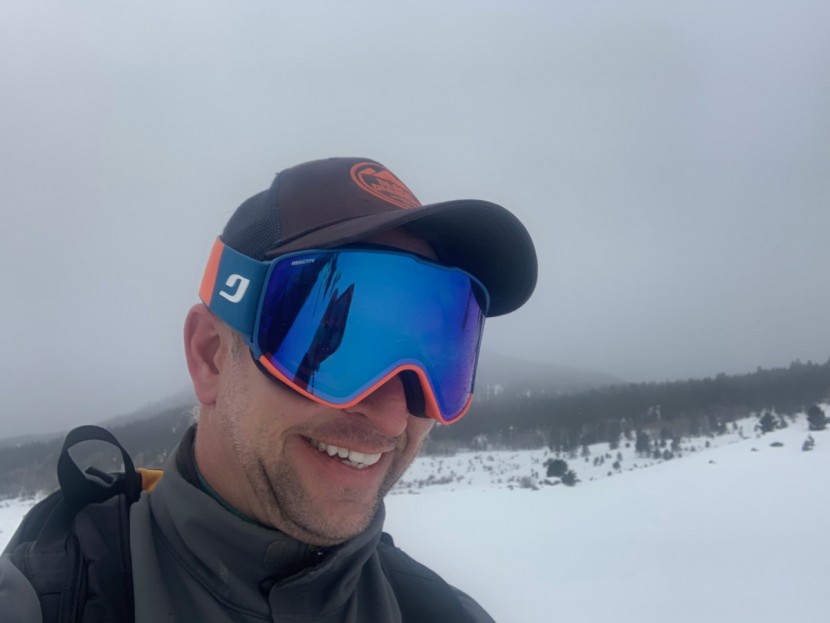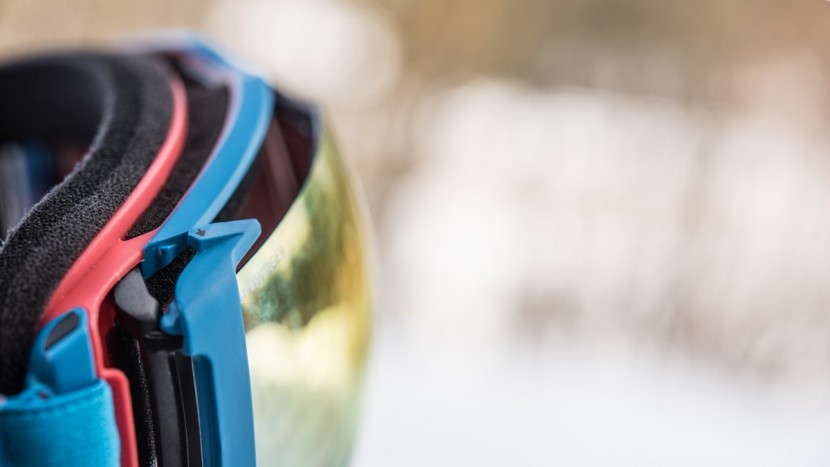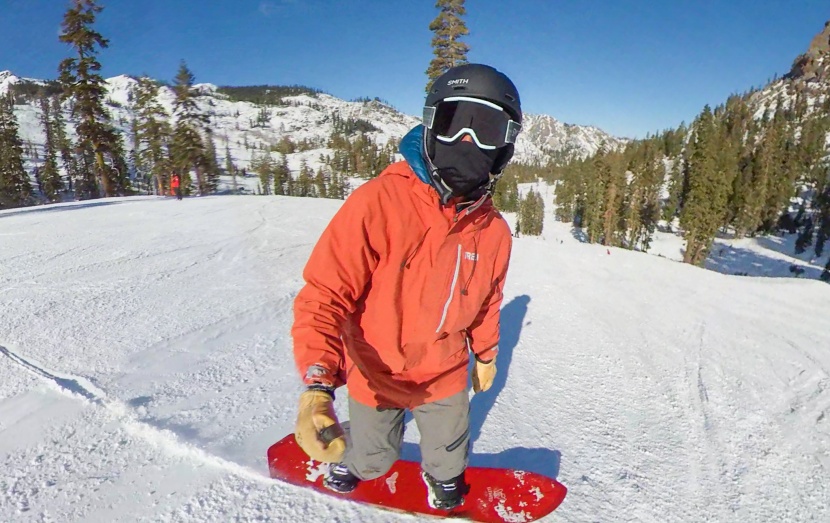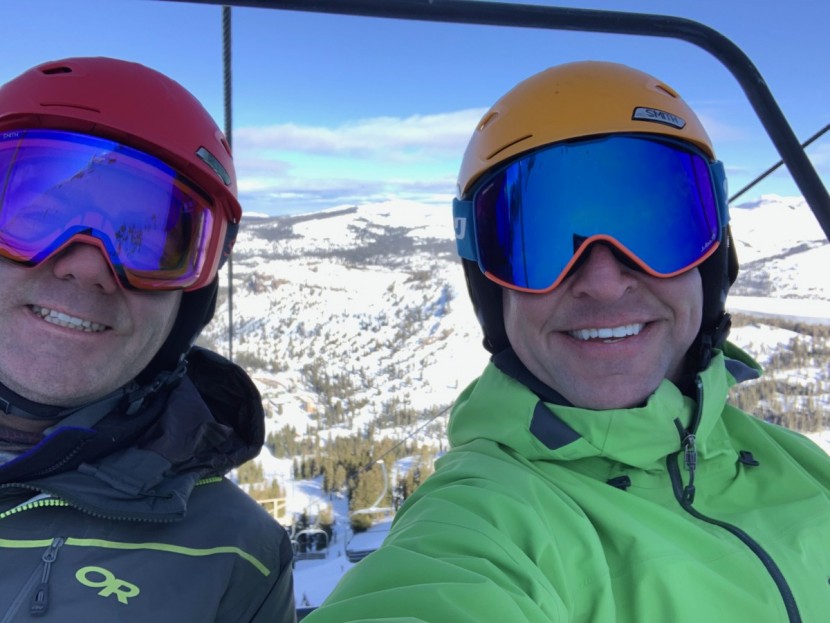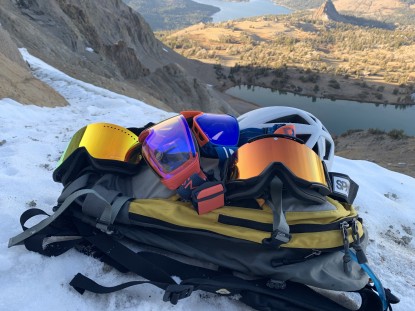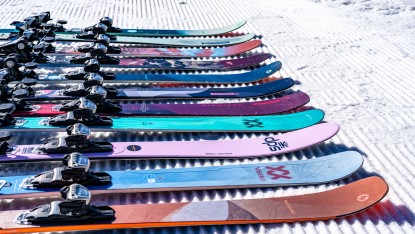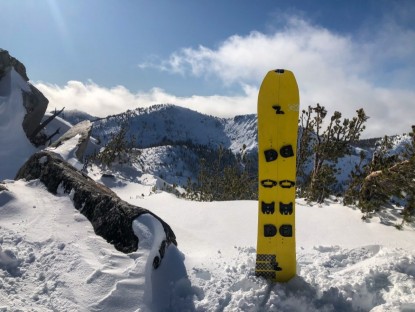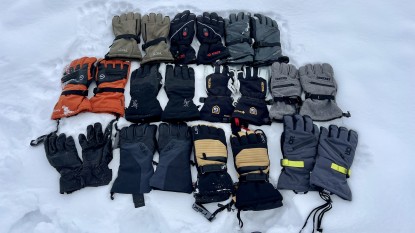You've decided it's time to score a new pair of goggles. It can be a pretty overwhelming choice when you look at all of the different manufacturers and large selections that each one makes. Have no fear; we've been watching the game for many years, and our experience brings unique insight. We explain key factors to consider and break down marketing and technical terminology into straight-talk to help you understand and navigate the market.
Fit And Comfort
The first thing to consider when choosing new goggles is how well they fit you. The newest, latest, and greatest goggle will leave you disappointed if they cause you discomfort. Most goggles are made with a medium to large fit that works for most skiers and boarders. Manufacturers offer goggle models that are adapted to smaller facial structures, too. These are normally denoted with a simple “s” at the end of the product name at online retailers, such as the “Dragon NFXs.”
The goal is to match your facial structure and size with the goggle frame. If possible, trying on several pairs in person is going to be your best bet for ensuring a good fit. If you are fortunate to live somewhere that has a good local selection, it's a good idea to take the helmet you'll be using to make sure you have a good goggle to helmet interface. Most goggles will fit well with most helmets, but if you have the opportunity to evaluate in person, bonus. If you're not able to try them on in person before buying, most manufacturers have information on their websites to help you choose as well.
Once you slip a pair of goggles on, pay special attention to gaps and pressure points. Gaps between the foam and your face will allow airflow, snow, and moisture to enter the space between the face and the inner goggle, which is often problematic. Pressure points can be uncomfortable over time. We've found that a common area that you may feel uncomfortable pressure is across the bridge of your nose. It doesn't feel great and can even make you feel like it's tough to breathe through your nose. Avoid that.
Also, consider the padding; is it thick and supple enough? Does it feel nice and soft, or does the liner have more of a coarse feel? Everyone has their preferences, so keep yours in mind and stick with what you like.
Types of Lenses
After making sure you pick goggles that fit well, the next major feature to consider is the type of lens you'd like. Goggles are made with three general lens shapes; cylindrical, spherical, and toric. If you're unfamiliar with goggle jargon, here's a quick rundown to explain each type.
Cylindrical
Cylindrical goggle lenses are those that curve only on the horizontal plane, or x-axis, meaning they curve from side to side but not top to bottom or y-axis. This more traditional looking lens style is typically found on more affordable goggles because they are less expensive to produce than spherical or toric lenses. In addition to the price, many people prefer the look of a cylindrical lens over the rounded shapes typical of spherical models. In general, the optical quality of cylindrical lenses is considered to be lower than that of their more curvaceous counterparts. The lack of curve on the vertical plane or y-axis can marginally distort visuals near the periphery of the lens. While distortion is a consideration, the visual quality of cylindrical lenses has come a long way and continues to improve. The market offers plenty of quality cylindrical lens models to suit the needs of beginner to expert skiers and riders. Many of our testers and experts ski with cylindrical lenses and don't feel hindered by them visually.
Spherical
Spherical lenses curve on both the horizontal and vertical planes, or the x and y-axes. As their name suggests, these types of lenses have a rounded appearance. The BirdsEye Vision lenses from Smith are the most dramatic example of a spherical lens. Optically, spherical lenses are associated with superior quality. They utilize a dual-axis curvature to mimic the shape and natural patterns of the eye. This improves optical performance and helps minimize any distortion. The shape of the lens also allows for a larger field of view and clearer peripheral vision, as well as a reduction in glare compared to cylindrical lenses. Stylistically, spherical lenses have a somewhat space-age or futuristic look, especially when they have bright reflective coatings or modern frameless designs. A side effect of the shape of a spherical lens is that it increases the air volume within the goggle, which may help to reduce fogging. Spherical lenses are generally more expensive to manufacture and therefore are primarily found on pricier goggles.
Toric
Toric lenses are also a spherical-shaped lens that is said to be the most optically correct. This style of lens seems to split the difference between traditional cylindrical and spherical lens designs and results in a spherical lens that is less curved on the vertical plane and more on the horizontal. As with regular spherical lenses, the curved shape is intended to reduce distortion towards the periphery, reduce glare, and provide a large field of view. Toric lenses also have a more subtle shape than regular spherical lenses. The shape allows manufacturers to maximize the venting surface area, which could decrease fogging.
Lens Tech
All modern ski goggle lenses protect the user from the harms UV rays, and beyond that, some are designed with additional lens technologies. If you are a frequent skier, then you're likely familiar with mirrored lens coatings, and you've probably already heard of polarized and photochromic lenses. While each of these technologies is intended to improve the way you see on the mountain, there are major differences in the function of these different technologies.
Mirrored
Mirrored or reflective lenses are intended for use in the brightest of conditions. The reflective coating helps to reduce the amount of glare and visible light entering the lens by reflecting light away. Lenses intended for low light conditions often have no mirrored coating at all or a lighter one that allows more light through the lens.
Polarized
Polarized lenses reduce glare by filtering light through the horizontal plane, although they are less common in snow sports as they are primarily intended for use on the water. It may be worth checking out polarized lenses if you regularly spend time above treeline like high altitude ski mountaineering. Keep in mind that polarization can make seeing in low light conditions difficult, even while skiing in the trees, and that you may not be able to see LCD displays like your watch face.
Photochromic
Lenses that change tint automatically to adjust to changing light conditions are referred to as photochromic. A photochromic lens is intended to provide the user with a wide range of lens tint, or VLT percentage, to negate the need for multiple lenses for varying light conditions. These lenses are a good choice for skiers and boarders whose days include a wide variety in lighting. For example, skiing open to close, sunup to sundown, and above treeline down through heavy forest. Rather than having to choose one lens, you're able to get through most situations with this chameleon lens. Think of them as the jack of all trades but master of none.
Optical Enhancement
It seems that almost every goggle manufacturer has a different name for their optical enhancement technology. Oakley has Prizm, Smith has Chromapop, Anon has SONAR, Giro has VIVID, the list goes on and on. When it comes down to it, all of these optical enhancement technologies are intended to do the same thing—increase contrast and enhance definition. They generally make you see the world around you, and especially the snow surface, better than your eyes do on their own. They do so with varying degrees of success, but most quality goggle manufacturers make great lenses that truly make a difference.
Lens Tint and VLT
When it comes to the tint of the lens you buy, there are a couple of factors to consider. Manufacturers make lenses for their goggles in a variety of colored tints, reflective coatings, and VLT (visible light transmission) percentages. Most goggles come with two lenses for different light conditions, one for bright and one for low light. Keep reading to learn more about VLT and how lens tints affect the way you see the slope.
VLT
VLT is an acronym for Visible Light Transmission and is listed as a percentage. VLT refers to the amount of visible light that is allowed to pass through the lens to your eyes. Lenses are designed for specific lighting conditions. Some do great on cloudy, stormy days, while other VLT percentages are best suited for sunny days. The lower the VLT percentage, the less light is allowed to pass through the lens and vice versa. For example, a lens with a 10% VLT only allows 10% of visible light to pass through it while it blocks the other 90%. You generally want a lower VLT percentage (5%-20%) for bright sunny days and a higher VLT percentage for low light days (43%-80%) and night (80%-90%). Lenses with a middle of the road VLT (21%-42%) are great for the average day where you might find yourself in sunny, shady, and partly sunny areas.
Strategically selecting the lens with the correct VLT for the conditions will increase the contours and overall definition of the slope to help you ride your best. Fortunately, goggle manufacturers make a wide array of replacement lenses for their goggles so that you can get the ideal lens(es) to match your needs and preferences.
Tint
In addition to varying levels of VLT, lenses are produced in a huge range of tints and reflective colored coatings. Generally speaking, darker lens tints like black and grey will also be affiliated with lower VLT's while lighter tints like rose and yellow will be more common with higher VLT's. Red and green tints typically land in the middle. Reflective coatings also affect VLT by reflecting bright light away from the lens. Since goggle lenses are available in several colors, there's even a good chance you'll find one of these VLT reducing lenses that'll match the rest of your gear.
Changing Lenses
With a few exceptions, most goggles have interchangeable lenses, although some are equipped with photochromic lenses that don't require swapping. While lens swaps are easier than ever, the ease of swapping varies dramatically between brands and, more importantly, price points. Overall, the pricier the goggle, the easier it is to change lenses. This is especially important for people who may only have one set of goggles or who change lenses frequently to adjust for varying light conditions. The traditional style of lens attachment involves notched cutouts on the edge of a lens that snap into place within the lip of the goggle's frame. This style works but typically involves a lot more effort and frustration.
The quickest and most user-friendly designs are the magnetic lenses that many brands have adopted. This lens attachment style involves several small but powerful magnets that hold the lens onto the frame, and lens changes can be done in mere seconds. Other brands have developed their own lens attachment styles with clips, seals, and other methods of connecting the lens to the frame.
Style
Style is a very personal thing, and goggle manufacturers are producing models in a wide range of styles to suit an equally wide range of tastes. These days, goggles primarily fall into one of three stylistic categories, frameless, semi-frameless, and framed. These are distinctions that refer to the amount of frame visible when viewed from straight on.
Frameless refers to goggles that have large lenses that extend to the edge of the frame with no part of the goggle frame visible. The completely frameless style is quite bold and flashy in appearance and is currently quite popular.
Semi-frameless lenses are those that have at least a little bit of the frame still showing. Typically the amount of visible frame is limited to the nosepiece or contact points that secure the lens to the frame.
Until recently, most goggles were produced with a framed style. A framed goggle is one that has a visible frame all the way around the perimeter of the goggle lens. This is the more traditional, or classic, style of goggles, and some prefer this over the modern frameless designs.
Ventilation
As you exert yourself during a day on the mountain, moisture can build up, which creates fogging on the inside of the goggle lens. Modern goggles come with double lenses that help reduce fogging by creating an insulating barrier between the warm air inside the goggle and the cooler air outside. The majority of lenses are also treated with an anti-fog coating that further reduces the likelihood of condensation building up inside the lens. Additionally, modern ski goggles all have ventilation integrated into their designs, which is intended to help keep air circulating and prevent fogging. Different brands have different ventilation systems, but it is typically in the form of cutouts around the outside of the frame that is covered with an open-cell foam that allows air to pass through. The ventilation capabilities of goggles vary, with some allowing for noticeably more air circulation than others.
- Always dry out your goggles
- Refrain from resting goggles on your head
- Manage your heat to avoid sweating on the hill
- Maintain a small gap between your goggles and face mask
OTG
Over The Glasses (OTG) refers to goggles that can fit over your everyday prescription glasses. Some manufacturers design models that are specifically for this purpose. If you wear glasses, several modern ski goggles are large enough to accommodate your eyewear, and you may not need to look for a specific OTG goggle. How a set of goggles fits over your eyewear may vary, so it's worth trying them on before you purchase to ensure compatibility.
Helmet Compatibility
If you ski with a helmet, which we highly recommend, then you may be interested in how well a pair of goggles fits with your dome protector. Ski goggles are designed to be compatible with helmets, and many brands make helmets and goggles designed to be used together. As we mentioned above, goggle frames come in various shapes and sizes, and the way they fit with helmets may vary slightly depending on the goggle/helmet combo. It may be worth trying a model on before you buy it to make sure it fits well. Goggle straps are also designed to be large enough to fit around a helmet easily and also have silicone strips added to the inside to keep your goggles in place.
Conclusion
There are a lot of factors to consider when searching for a new set of goggles. From overall fit and comfort to lens types and tints to helmet and goggle interface, we hope this article helps you make a more informed decision when shopping for your new goggles.

